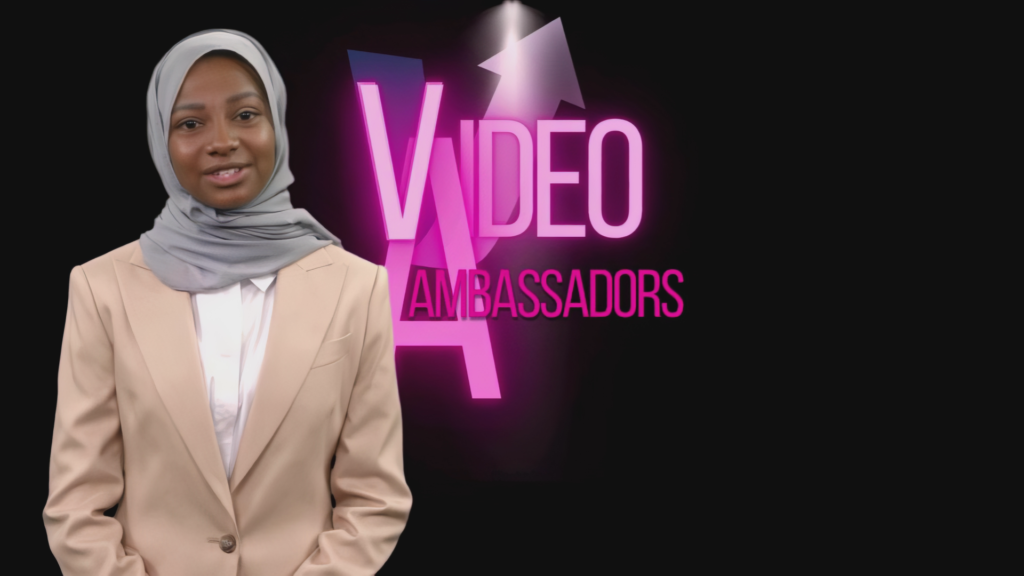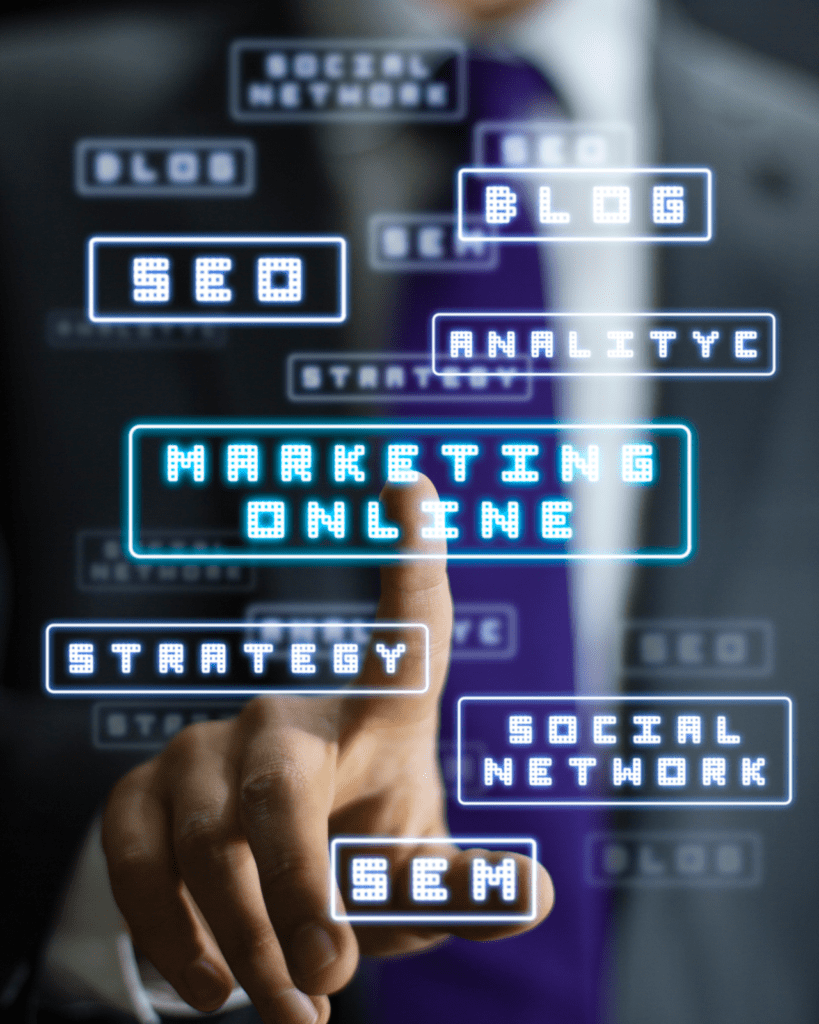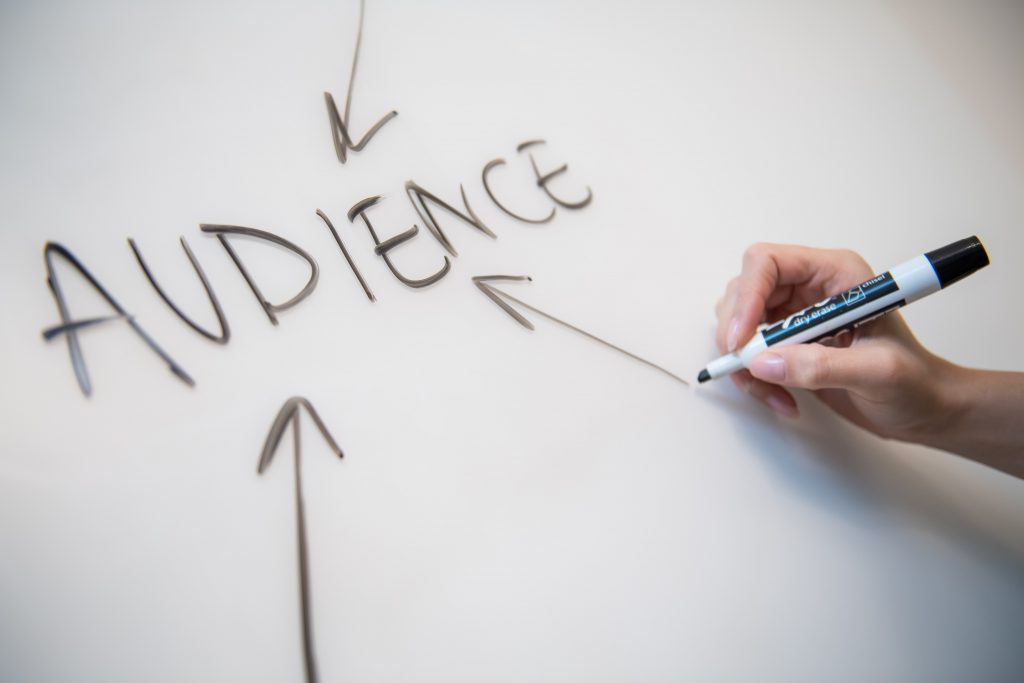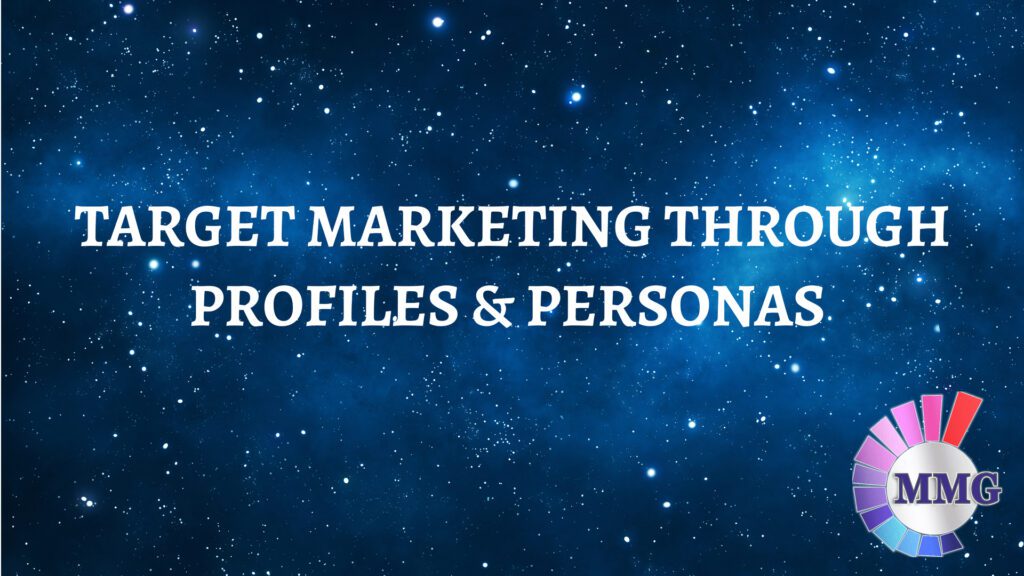INTEGRATING AI VIDEO AMBASSADORS INTO SUCCESSFUL MARKETING CAMPAIGNS
The following is a case example of a Brand Awareness Campaign for Back to School covering and outlining these different audiences and age groups, how to plan, and how to create and implement a campaign utilizing Multimedia Marketing Group’s Video Ambassadors. This case study is an in-depth study of persons, groups, and events. In a case study such as this, nearly every aspect of the subject’s life and history is analyzed to seek patterns and causes of behavior. The case study also examines the different types of case studies used in the Brand Awareness Campaign for Back to School. These include intrinsic, instrumental, and collective case studies. Intrinsic case studies are useful for learning about unique cases, while instrumental case studies help to understand broader issues or opportunities by looking at individual cases. A collective case study is useful for examining several cases simultaneously. By following the multiple components of a marketing campaign which include planning, measurement, identification of the target market, delivery, achieving results, and assessment, businesses can successfully introduce new products and technologies to the market.

A CASE EXAMPLE OF A BRAND AWARENESS CAMPAIGN FOR BACK TO SCHOOL
The Brand Awareness Campaign for Back to School is a comprehensive case study that examines the different audiences and age groups, the planning process, and the implementation of a campaign utilizing Multimedia Marketing Group’s Video Ambassadors. This case study takes an in-depth look at the persons, groups, and events involved in the campaign.
To fully understand the behavior of the different audiences and age groups, the case study analyzes nearly every aspect of their lives and histories to seek patterns and causes of behavior. This provides valuable insights into how to effectively target and communicate with each group.
The planning stage of the campaign is also thoroughly examined in the case study. This includes identifying the campaign objectives, determining the target market, developing strategies, and measuring the results. The use of Video Ambassadors is a key component of the campaign strategy, and the case study explores how this approach can be effective in reaching the target market and achieving the campaign objectives.
The rise of smartphones and tablets has made video a ubiquitous presence in our lives. From social media feeds to news sites and entertainment platforms, video content is everywhere. This presents a massive opportunity for businesses to connect with consumers in a more engaging and interactive way. By leveraging video, businesses can create more compelling content that resonates with their target audience. For example, a virtual character or in this case an MMG AI Video Ambassador could appear on a viewer’s phone or tablet while they’re watching a television show or movie. The Spokesperson could offer additional information and insight about the content, such as behind-the-scenes details or actor bios. Alternatively, the virtual Ambassador could provide personalized recommendations based on the planned targeted client’s psycho/social demographics, viewer’s interests as well as the viewing history.


The Brand Awareness Campaign for Back to School sited here, is a complex and multi-faceted campaign that requires a thorough understanding of the target market, effective planning, and creative strategies to achieve the desired results. The case study provides valuable insights into the different audiences and age groups involved, as well as the various approaches that can be used to effectively communicate with them. The use of Video Ambassadors is a particularly innovative and effective strategy that can help to differentiate the campaign from competitors and achieve its objectives. By examining each aspect of the campaign in detail, the case study provides a comprehensive overview of how to plan and execute a successful brand awareness campaign for back to school.
Marketing campaigns are essential for businesses in a highly competitive market to differentiate themselves from the competition. This is especially true when introducing a new product or a new piece of technology or innovation. The success of any marketing campaign relies on several components that need to be carefully planned and executed to achieve the desired results.
To fully understand the behavior of the different audiences and age groups, the case study analyzes nearly every aspect of their lives and histories to seek patterns and causes of behavior. This provides valuable insights into how to effectively target and communicate with each group.
The planning stage of the campaign is also thoroughly examined in the case study. This includes identifying the campaign objectives, determining the target market, developing strategies, and measuring the results. The use of Video Ambassadors is a key component of the campaign strategy, and the case study explores how this approach can be effective in reaching the target market and achieving the campaign objectives.
The rise of smartphones and tablets has made video a ubiquitous presence in our lives. From social media feeds to news sites and entertainment platforms, video content is everywhere. This presents a massive opportunity for businesses to connect with consumers in a more engaging and interactive way. By leveraging video, businesses can create more compelling content that resonates with their target audience. For example, a virtual character or in this case an MMG AI Video Ambassador could appear on a viewer’s phone or tablet while they’re watching a television show or movie. The Spokesperson could offer additional information and insight about the content, such as behind-the-scenes details or actor bios. Alternatively, the virtual Ambassador could provide personalized recommendations based on the planned targeted client’s psycho/social demographics, viewer’s interests as well as the viewing history.
The first component of a marketing campaign is the planning stage. This involves defining the campaign’s goals and objectives, understanding the target audience, and developing a vision for the campaign. It is important to have a clear understanding of what the campaign is trying to accomplish before proceeding with the other components.
The third component is identifying the target market. Picking the right target market is critical in ensuring that the right product is marketed to the right customers. Understanding the customer’s stage in the buying process is also important in determining the target market. If the product is a new innovative technology, the target market should be centered around innovators or early adopters. In contrast, if the product is entering a developed market space, perhaps targeting an early majority or late majority audience would fare better.
The fifth component is achieving results. Frequently referring to the goals set out from the beginning of the campaign is important to achieve the desired results. While there may not be a set formula to achieve results, calibrating marketing efforts to align with goals is vital. Marketing campaigns can be used to build brand awareness and establish a brand identity. By consistently promoting a product or service through various channels, businesses can increase their visibility and improve their brand recognition among potential customers.
Marketing campaigns can also be used to build relationships with customers. By engaging with customers through social media, email marketing, or other channels, businesses can create a sense of loyalty and foster long-term relationships with their customers. Adapting to changing market trends Marketing campaigns need to be adaptable and able to respond to changing market trends. With the rapid pace of technological change, it is important for businesses to keep up with emerging trends and adapt their marketing strategies accordingly.
The next component is measurement. Defining the key performance indicators (KPIs) and determining how the campaign’s results will be measured are essential to evaluating its effectiveness. Examples of KPIs include the number of sales, pre-orders, customer sentiment for the product, shares on social media, and the campaign’s perception in the news.
The delivery of the marketing campaign is the fourth component. The delivery of the campaign should be tailored to the target market. For instance, if the target market consists of innovators or early adopters, the campaign should be delivered through social media or other high-tech platforms. However, if the target market is not as in tune with technology, a low-tech delivery of the campaign may be better suited.
The final component of a marketing campaign is the assessment of the campaign’s effectiveness. Evaluating the results of the campaign is critical to understanding if the campaign was successful and if the efforts should be re-evaluated. This can be achieved through feedback from consumers or other external sources. Analyzing this feedback can be incredibly helpful in improving future marketing campaigns. Measuring the return on investment (ROI) of a marketing campaign is essential to determine its effectiveness. By tracking metrics such as website traffic, conversion rates, and sales, businesses can determine whether their marketing efforts are generating a positive ROI and adjust their strategies accordingly.
THE ADVANCEMENT OF TECHNOLOGY AND DATA ANALYTICS
With the advancement of technology and data analytics, companies now have access to vast amounts of information about their target markets. This allows them to tailor their advertising, marketing, and communication efforts to the specific needs and preferences of each individual consumer, creating a more personalized and effective approach.
Through the use of cookies and tracking pixels, companies can track a user’s online behavior and interests, which can be used to show them targeted ads based on their previous interactions. Additionally, companies can use email marketing campaigns to send personalized messages to subscribers based on their past purchases, preferences, and browsing history.
Social media platforms have also provided businesses with new opportunities to connect with their target audience in a more personalized way. By analyzing social media activity and engagement, companies can create targeted social media campaigns that speak directly to the interests and needs of their audience.
Factors that have contributed to the increased personalization and effectiveness of advertising, marketing, and communication.
Artificial Intelligence (AI)
Artificial intelligence (AI)
Interactive Content
Interactive content
Omnichannel Marketing
Omnichannel Marketing
Personalization Platforms
Personalization Platforms
Mobile Devices
Mobile devices
User-Generated Content (UGC)
User-Generated Content (UGC)
Big Data
Big Data
Influencer Marketing
Influencer Marketing
With the advancement of technology and data analytics, companies now have access to vast amounts of information about their target markets. This allows them to tailor their advertising, marketing, and communication efforts to the specific needs and preferences of each individual consumer, creating a more personalized and effective approach.
Through the use of cookies and tracking pixels, companies can track a user’s online behavior and interests, which can be used to show them targeted ads based on their previous interactions. Additionally, companies can use email marketing campaigns to send personalized messages to subscribers based on their past purchases, preferences, and browsing history.
Social media platforms have also provided businesses with new opportunities to connect with their target audience in a more personalized way. By analyzing social media activity and engagement, companies can create targeted social media campaigns that speak directly to the interests and needs of their audience.
Factors that have contributed to the increased personalization and effectiveness of advertising, marketing, and communication.
SEASONAL KICK OFF
As the summer winds down, the back-to-school season kicks off, and retailers gear up to target different audiences to maximize sales. This season is a crucial time for businesses to focus on their marketing strategies to reach the right audience. Understanding your audience is key to driving sales and improving customer engagement. Here, we’ll look at five different audiences that retailers can target during the back-to-school season.
WEALTHY, HIGHLY EDUCATED, ENJOY A LIFE OF TRAVEL AND INDULGENCE
This group of consumers is typically high earners, highly educated, and enjoys the finer things in life. They tend to have no problem spending money on premium products and are willing to indulge in travel experiences. To reach this audience, retailers should offer premium, high-end products that are exclusive, unique, and trendy. Luxury goods and services such as designer backpacks, high-end electronics, and travel accessories are ideal for this audience.
To target this audience, retailers can leverage social media platforms such as Instagram to showcase their high-end products and services. They can also use email marketing campaigns to provide exclusive deals and discounts to this audience. Personalization can also be a powerful tool to engage with this audience by offering custom products and services that cater to their unique preferences.


BILINGUAL, LARGE HOUSEHOLDS, FINANCIALLY CAUTIOUS
This audience is composed of households that have multiple languages spoken at home and typically have a larger family. They tend to be more cautious with their spending and prefer to shop for value. To reach this audience, retailers should offer discounts, promotions, and bundle deals on items like school supplies, clothing, and electronics.
To attract this audience, retailers can provide bilingual customer support and marketing materials to help ease the shopping experience for those who speak languages other than English. Providing a “back-to-school” shopping list with suggested items and pricing can help shoppers plan their purchases better. Offering cashback rewards or coupons for future purchases can also help entice this audience to make repeat purchases.
To target this audience, retailers can leverage social media platforms such as Instagram to showcase their high-end products and services. They can also use email marketing campaigns to provide exclusive deals and discounts to this audience. Personalization can also be a powerful tool to engage with this audience by offering custom products and services that cater to their unique preferences.
ACTIVE LIFESTYLE, MIDDLE-AGED FAMILIES, PURCHASE HOME PRODUCTS & FURNISHINGS
This audience typically consists of middle-aged families who lead active lifestyles and prioritize their home environment. They often invest in home products and furnishings to create a comfortable, welcoming atmosphere for their families. Retailers should focus on providing products that cater to their active lifestyle, such as fitness gear, sportswear, and outdoor gear. For home products and furnishings, offering a wide range of styles, colors, and price points can help attract this audience.
To appeal to this audience, retailers can create bundle deals that combine athletic wear with home products and furnishings to provide a one-stop-shop for their needs. Retailers can also offer in-store workshops, such as fitness classes or cooking demonstrations, to further engage with this audience. Social media platforms can also be leveraged to showcase home product styling tips and ideas for a healthy and active lifestyle.
To attract this audience, retailers can provide bilingual customer support and marketing materials to help ease the shopping experience for those who speak languages other than English. Providing a “back-to-school” shopping list with suggested items and pricing can help shoppers plan their purchases better. Offering cashback rewards or coupons for future purchases can also help entice this audience to make repeat purchases.
To target this audience, retailers can leverage social media platforms such as Instagram to showcase their high-end products and services. They can also use email marketing campaigns to provide exclusive deals and discounts to this audience. Personalization can also be a powerful tool to engage with this audience by offering custom products and services that cater to their unique preferences.


WHOLESALE MEMBERS, GROWING FAMILIES IN THE SUBURBS, INTERESTED IN CHILDREN’S GAMES
This audience is composed of families who are part of wholesale membership clubs and tend to live in the suburbs. They prioritize family-friendly activities and games and are looking for ways to entertain their children while staying within their budget. Retailers should offer a wide range of children’s games and activities, including educational toys and games, puzzles, and crafts. Offering bulk discounts and promotions can also help retailers attract this audience.
To target this audience, retailers can leverage social media platforms to showcase the latest trends in children’s games and activities. Offering free or discounted membership trials for wholesale clubs can help entice this audience to join and shop at their store. Retailers can also offer personalized recommendations for children’s games based on age and interests.
To appeal to this audience, retailers can create bundle deals that combine athletic wear with home products and furnishings to provide a one-stop-shop for their needs. Retailers can also offer in-store workshops, such as fitness classes or cooking demonstrations, to further engage with this audience. Social media platforms can also be leveraged to showcase home product styling tips and ideas for a healthy and active lifestyle.
To attract this audience, retailers can provide bilingual customer support and marketing materials to help ease the shopping experience for those who speak languages other than English. Providing a “back-to-school” shopping list with suggested items and pricing can help shoppers plan their purchases better. Offering cashback rewards or coupons for future purchases can also help entice this audience to make repeat purchases.
To target this audience, retailers can leverage social media platforms such as Instagram to showcase their high-end products and services. They can also use email marketing campaigns to provide exclusive deals and discounts to this audience. Personalization can also be a powerful tool to engage with this audience by offering custom products and services that cater to their unique preferences.
PEAK EARNING YEARS, SAVVY INVESTORS, ENVIRONMENTAL PHILANTHROPISTS
This audience is composed of individuals who are in their peak earning years and tend to be savvy investors. They care about the environment and are interested in giving back to their community through philanthropic efforts. To reach this audience, retailers should focus on offering eco-friendly and sustainable products, such as reusable water bottles and lunch containers. Partnering with local charities and organizations and offering promotions and discounts for donations can also help retailers attract this audience.
To appeal to this audience, retailers can highlight the sustainability and eco-friendliness of their products through marketing campaigns and in-store signage. Partnering with local environmental organizations or charities can also help demonstrate the retailer’s commitment to environmental philanthropy. Offering free reusable bags or recycling programs can also be an effective strategy to engage with this audience.

Understanding, recognizing, and targeting your audience is crucial for retailers during the back-to-school season. By identifying different groups and their unique needs and preferences, businesses can tailor their marketing strategies and product offerings to increase sales and customer engagement. With the right marketing approach, retailers can successfully target these five different audiences and achieve a successful back-to-school season.
AI ON CAMERA REPRESENTATIVES
How AI Video Ambassadors from Multimedia Marketing Group can be used for the top five back-to-school audiences and be incorporated into the marketing and communication across multiple social media platforms and television broadcasting for a targeted back to school promotion.
Here are just a few of the several ways that these AI Video Ambassadors can be used:
MMG AI Video Ambassadors can create personalized video recommendations based on the shopping behavior and preferences of individual customer groups. For example, if a customer segment has previously purchased school supplies from a retailer, the AI Video Ambassador can be created as a video showcasing new products that are related to this group’s past purchases, such as backpacks or lunch boxes. These videos can be posted on social media platforms and targeted to specific customers wants, increasing the likelihood of them making repeat purchases.
AI Video Ambassadors can also engage with customers on social media platforms by responding to typical and repeated profile comments and messages. They can answer those typical targeted questions about back-to-school products and provide personalized recommendations based on customer needs quickly and effectively. This “just in time engagement” can help build relationships between the customer and the retailer, increasing the likelihood of them making a purchase.
AI Video Ambassadors can be created for product demonstration videos that showcase the features and benefits of back-to-school products. These videos can be posted on websites, social media platforms, broadcast or cablecast, to specific targeted audiences, such as parents of elementary school children or college students. These videos can help increase product awareness and educate customers on the benefits of specific products.
AI Video Ambassadors can also be used in influencer marketing campaigns. MMG can create videos featuring popular social media influencers showcasing back-to-school products that the AI on camera spoke person will highlight. These videos can be shared on the influencer’s social media accounts, increasing product visibility, and attracting a wider audience.
AI Video Ambassadors can also be used to create simulated live event videos that showcase back-to-school products. For example, a retailer could create a live simulated virtual video showcasing the latest back-to-school fashion trends. Customers can then interact with the video in real-time on YouTube or Vimeo, asking questions and making purchases directly from the video. This offers solid analytics for businesses looking to track ROI and will command a massive number of users. If you have specific content branding requirements or need advanced support, these simulations are engaging. The produced videos have a ‘live feel’ for the viewer experience with the use an AI Video Ambassador.
- Clickable hotspot: A clickable hotspot is a type of spotlight annotation that allows users to click on a specific part of the video to access additional information or interactive elements. This can be useful for adding links to related content or for creating interactive quizzes or surveys.
- Interactive transcript: An interactive transcript is a type of spotlight annotation that displays a transcript of the video and allows users to click on specific words or phrases to jump to that point in the video. This can be useful for making it easier for users to find specific information in the video.
- Keyframe annotation: A keyframe annotation is a type of spotlight annotation that highlights a specific moment in the video, such as a key scene or important point. This can be useful for drawing attention to important information or for creating a visual timeline of the video.
- In-video form: An in-video form is a type of spotlight annotation that allows users to fill out a form directly within the video. This can be useful for collecting user feedback or for creating interactive quizzes or surveys.
- Interactive image map: An interactive image map is a type of spotlight annotation that allows users to click on different parts of an image within the video to access additional information or interactive elements. This can be useful for providing additional context or for creating interactive infographics.
Incorporating AI Video Ambassadors into a back-to-school marketing campaign can help retailers create personalized and engaging content that resonates with their target audience. By leveraging social media platforms, retailers can reach a wider audience and increase sales during the back-to-school season.
FROM PERSONALITY TRAITS TO SOCIAL CONTEXT: THE KEY ELEMENTS OF A SUCCESSFUL PSYCHO/SOCIAL PROFILE
Psycho/Social Profiles, these profiles, by definition, are made up of individuals in the broad marketing context. It is the collective influence that is combined with psychological forces and the surrounding social environment in which your audience lives, works, and plays. It is their goals, dreams, opportunities, and as well, challenges that make up the decisions your audience will make.
Exploring the Psychological Factors: Understanding Personality, Attitudes, and Values
Psychographic factors include personality traits, attitudes, beliefs, and values, while social factors include cultural norms, peer influence, and socioeconomic status. By analyzing these factors, you can create a more nuanced understanding of your target audience and tailor your marketing efforts accordingly.
For example, if you’re marketing a luxury back to school product, you may want to target individuals with a high disposable income and a preference for high-end brands. However, by examining their psychographic and social profiles, you may discover that they also value environmental sustainability or social responsibility. By highlighting these values in your marketing messaging, you can create a more compelling message that resonates with your target audience.
In the world of content marketing, understanding your target audience is crucial for developing effective campaigns and messaging. While basic demographic information like age, gender, and income can provide a starting point, it’s often not enough to truly connect with your audience. That’s where psycho/social profiles come in.
Psycho/social profiles are a way of understanding your audience beyond just their basic demographic information. Instead, these profiles delve into the psychological and social factors that influence their behavior, attitudes, and decision-making. By analyzing these factors, you can gain a deeper understanding of your audience’s motivations, values, and interests, and tailor your marketing efforts accordingly.


The Social Context: How Cultural Norms and Peer Influence Shape Behavior
There are a number of different psychological factors that can be included in a psycho/social profile. These might include personality traits, such as introversion or extroversion, openness to experience, or emotional stability. Attitudes and beliefs are also important considerations, such as political or religious affiliations, views on social issues, or attitudes toward specific products or services.
Values are another important aspect of a psycho/social profile. These might include values related to family, community, social responsibility, or environmentalism, among others. By understanding the values that drive your audience, you can tailor your messaging to resonate with their deeper motivations and priorities.
Social factors are also an important consideration when developing psycho/social profiles. These might include cultural norms, peer influence, or socioeconomic status. For example, an individual’s social class can have a significant impact on their attitudes toward money, status, and consumption. By understanding the social factors that shape your audience’s behavior, you can develop messaging that speaks directly to their unique experiences and perspectives.
So how do you go about developing a psycho/social profile? There are a number of different methods that can be used, but one of the most effective is through market research. Surveys and focus groups can provide valuable insights into the attitudes, beliefs, and values of your target audience. Social listening and analysis of online behavior can also provide a wealth of information about your audience’s interests and behaviors.
Once you have gathered this information, you can begin to develop a detailed psycho/social profile that captures the key characteristics of your audience. This might include a summary of their personality traits, values, and attitudes, as well as a description of their social context and the factors that influence their behavior.
Tailoring Your Messaging: How Psycho/Social Profiles Help You Connect with Your Audience
With a detailed psycho/social profile in hand, you can begin to tailor your marketing efforts to better connect with your audience. For instance, if you know that your audience values social responsibility, you might highlight your company’s commitment to sustainability or charitable causes in your messaging. If your audience is heavily influenced by their peers, you might focus on developing social proof or social media campaigns that tap into the power of social influence.


Gathering Insights: Using Market Research to Develop Effective Psycho/Social Profiles
One of the benefits of using psycho/social profiles is that they can help you identify and reach niche audiences. By understanding the unique characteristics of a particular group, you can develop messaging that speaks directly to their needs and interests. This can be especially effective in crowded markets where competition for attention is high.
Another important consideration when developing psycho/social profiles is the need for ongoing research and refinement. As your audience evolves over time, their attitudes, values, and behaviors may shift as well. By staying attuned to these changes and updating your profiles accordingly, you can ensure that your marketing efforts remain relevant and effective.
Beyond doubt, and it’s worth noting that while psycho/social profiles can be a valuable tool, they are not a one-size-fits-all solution. Depending on your product or service, demographic factors may still play an important role in understanding your audience. Additionally, it’s important to recognize that individuals are complex and multi-dimensional, and no profile can capture the full richness of a person’s experience.
Staying Relevant: Why Ongoing Research and Refinement is Key to Successful Psycho/Social Profiles.
In conclusion, psycho/social profiles are an essential tool for understanding your target audience and developing effective marketing campaigns. By analyzing the psychological and social factors that shape your audience’s behavior, you can gain a deeper understanding of their motivations, values, and interests, and develop messaging that resonates with their unique perspectives. Whether through market research, social listening, or other methods, developing a detailed psycho/social profile is an important step in building a successful marketing strategy.

WHY PSYCHO/SOCIAL PROFILES ARE ESSENTIAL FOR BUILDING A SUCCESSFUL BACK-TO-SCHOOL CAMPAIGN
Psychological factors and audience personas play an important role in consumer behavior, and they can be used to segment the back-to-school market into different groups based on their personality traits, attitudes, beliefs, and values. Understanding these factors can help marketers tailor their messaging and offerings to better resonate with their target audience.
To exemplify these overall concepts, younger audiences such as elementary and middle school students, marketers could focus on creating a sense of fun and excitement around back-to-school shopping. They may also want to target parents and emphasize the importance of setting a good foundation for their children’s education.
For high school students, marketers may want to tap into their desire for self-expression and individuality. They may also want to focus on the social aspect of back-to-school shopping, such as finding the latest trends and styles that will help them fit in with their peers. K-12 students are a crucial target audience for back-to-school marketing. While they may not be always be making the purchasing decisions themselves, they can still influence their parents’ decisions through their preferences and opinions. When targeting K-12 students, marketers should focus on products and services that are characterized by technological sophistication, trendy, and popular among this age group.
College students may be more focused on functionality and practicality, as they need to balance their academic and personal lives. These individuals are often living away from home for the first time and are looking to establish their independence which will allow the campaign to focus on products and services that enhance their college experience. Marketers may want to highlight products that are durable, efficient, and convenient to use. They could also tap into the desire for self-improvement and personal growth by promoting products that can help them achieve their academic goals.
In terms of psychographic factors, marketers may want to target different audiences based on their values and beliefs. To pattern this model, environmentally conscious consumers may be more interested in products that are eco-friendly or sustainably sourced. Other consumers may be more interested in products that support social causes or have a positive impact on their community.
Cultural Norms, Peer Influence, and Socioeconomic Status in Back-to-School Marketing
Another way to target the different back-to-school audiences is by appealing to their values. For example, parents may value education and academic success, so a campaign focused on helping their children succeed in school could resonate with them. On the other hand, college students may value independence and personal growth, so a campaign that emphasizes the opportunities for self-discovery and exploration in college could be effective.
Attitudes play a role in targeting different audiences. A Back-to-School Campaign that emphasizes the convenience and time-saving benefits of a product or service may appeal to busy parents, while a campaign that emphasizes the social status and trendiness of a product may appeal to college students.
Personality traits are also a factor in targeting different audiences. Providing branded content of targeted products in the product lineup that emphasizes the safety and reliability of the product may appeal to risk-averse individuals, while a campaign that emphasizes excitement and adventure may appeal to more adventurous individuals. Cultural norms also play a role in back-to-school shopping decisions. In some cultures, it may be customary to buy new clothes and shoes for the start of the school year, while in others, it may be more common to reuse items from the previous year.
Understanding the target market’s unique needs, preferences, and values, as well as their psychographic and social factors, is essential for effective marketing. By tailoring the campaign to the target market, utilizing various marketing channels and tactics, businesses can engage with their audience and differentiate themselves from their competitors.

TO LEARN MORE ABOUT AUDIENCE PERSONAS & PSYCHO/SOCIAL PROFILES
TARGETING TO THE SPECIFIC NEEDS AND INTERESTS OF EACH AUDIENCE
Understanding Your Customers' Unique Needs and Interests
By tailoring the content and messaging of the AI Video Ambassadors to the specific needs and interests of each audience, marketers can increase engagement and conversions, and ultimately drive sales during the back-to-school season.
Here is how AI Video Ambassadors from Multimedia Marketing Groups can be used for back-to-school audiences:
For this audience, AI Video Ambassadors can create personalized videos showcasing high-end, luxury back-to-school products such as designer backpacks, high-tech gadgets, and exclusive stationary items. These videos can be shared on social media platforms that are popular among this audience, such as Instagram and LinkedIn. In addition, the AI Video Ambassadors can engage with customers on these platforms, answering predetermined questions and providing personalized recommendations.
For this audience, AI Video Ambassadors can be created for videos that highlight the value and affordability of back-to-school products, such as bulk packages of school supplies and budget-friendly furniture for study spaces. These videos can be shared on social media platforms that are popular among this audience, such as Facebook and Twitter. The MMG AI Video Ambassadors can also create personalized videos in both English and Spanish, addressing the specific needs of bilingual households
- For this audience, AI spokes persons can be created for videos that showcase back-to-school products that are geared toward active families, such as athletic gear and fitness equipment. In addition, the AI Video Ambassadors can create videos that highlight the latest trends in ‘off to college’ home decor and furniture for college dormitories, appealing to this audience’s interest in home improvement. These videos can be shared on social media platforms that are popular among this audience, such as Pinterest and YouTube.
For this audience, AI Video Ambassadors can be created for videos showcasing back-to-school products that are environmentally friendly and socially responsible, appealing to this audience’s values. The AI Video Ambassadors can also create videos highlighting the financial benefits of investing in quality back-to-school products, such as high-end backpacks and tech gear that last for several school years. These videos can be shared on social media platforms that are popular among this audience, such as LinkedIn and Twitter.
For families who homeschool their children, AI Video Ambassadors can be created for videos that showcase educational resources and tools such as online learning platforms, educational software, and homeschooling curricula. The videos can be shared on social media platforms that are popular among homeschooling communities, such as Facebook groups and homeschooling forums.
For college students, AI Video Ambassadors can be created for videos that showcase back-to-school products specifically tailored to their needs, such as dorm room furniture, laptops, and textbooks. In addition, AI Video Ambassadors can be produced that highlight the latest trends in college fashion and accessories, appealing to this audience’s interest in style. These videos can be shared on social media platforms that are popular among college students, such as Instagram and TikTok.
For parents who work outside the home, Ambassadors can be designed and scripts be created for videos that highlight products that simplify the back-to-school routine, such as meal prep containers, lunch boxes, and organization tools. In addition, Ambassadors can provide tips and strategies for balancing work and family life during the busy back-to-school season. These videos can be shared on social media platforms that are popular among working parents, such as LinkedIn and Facebook.
For families living in rural areas, AI on camera representatives can highlight products and resources specifically tailored to their needs, such as outdoor gear for nature walks and hikes, online learning resources for children in remote areas, and transportation solutions for students who live far from school. These videos can be shared on social media platforms that are popular among rural communities, such as Facebook groups and community forums.
For parents who are tech-savvy and rely heavily on technology to manage their busy schedules, MMG can provide videos that showcase the latest tech gadgets and apps designed for back-to-school season. These videos can be shared on social media platforms that are popular among this audience, such as LinkedIn and Twitter.
For families with special needs students, special AI presenters can highlight products and resources that cater to their unique needs, such as adaptive furniture, sensory tools, and assistive technology. These videos can be shared on social media platforms that are popular among this audience, such as Facebook groups and forums dedicated to special needs families.
For families living in urban areas, these videos can be targeted to showcase specific products and solutions that are tailored to the challenges of urban living, such as compact furniture, storage solutions, and transportation alternatives. These videos can be shared on social media platforms that are popular among urban communities, such as Instagram and Pinterest.
By creating personalized and relevant videos for each audience, marketers can increase the effectiveness of their back-to-school promotions and connect with their target customers on a deeper level. The AI Video Ambassadors can also provide insights and data on customer behavior and preferences, allowing marketers to further refine their targeting and messaging strategy. Imagine reaching your target audience with personalized video messages that showcase your brand’s products and services in a way that speaks directly to their unique needs and interests. With the help of MMG’s AI Video Ambassadors, you can make this a reality.
PRIORITIZING YOUR MARKETING DOLLARS FOR BACK-TO-SCHOOL SHOPPERS USING VIDEO STORYTELLING
When it comes to back-to-school marketing, it’s essential to prioritize your marketing dollars on your most valuable shoppers. This can be achieved by using video storytelling for your branded content. Video storytelling is a powerful tool for engaging your target audience and creating an emotional connection with them. By using video to tell stories about your brand and products, you can showcase their unique features and benefits in a way that is memorable and impactful.
PERSONALIZATION IS KEY FOR BRANDED CONTENT
Before creating your branded content, it’s crucial to define your target audience. Who is your most valuable back-to-school shopper? What are their needs, interests, and pain points? By understanding your target audience, you can create branded content that resonates with them on a deeper level. It’s also essential to personalize your content. Personalization is key to effective back-to-school marketing. By creating personalized videos for each of your target audiences, you can tailor your messaging to their unique needs and interests. This can help you connect with your customers on a deeper level and increase the effectiveness of your marketing efforts.
Social media is a powerful platform for reaching your target audience and promoting your branded content. By sharing your videos on popular social media platforms such as Facebook, Instagram, and YouTube, you can increase your brand’s visibility and reach your most valuable back-to-school shoppers where they spend their time online. Social media can also help you connect with your target audience by providing a platform for two-way communication. You can engage with your customers and respond to their feedback, which can help you improve your branded content and build stronger relationships with your customers.
To ensure that your marketing dollars are being spent effectively, it’s essential to measure the performance of your branded content and optimize your strategy accordingly. By tracking key metrics such as engagement rates, click-through rates, and conversions, you can identify which videos are resonating with your target audience and adjust your approach as needed. This can help you maximize the effectiveness of your back-to-school marketing campaign and drive real results for your business.
DEVELOPING A CLEAR BRAND IDENTITY
Before creating your branded content, it’s important to have a clear understanding of your brand identity. Your brand identity should reflect your company’s values, mission, and unique selling proposition. This can help you create branded content that is consistent with your overall brand image and resonates with your target audience.
Step One
Use data to inform your strategy:
Step Three
Leverage user-generated content:
Step Five
Utilize multiple platforms:
Step Seven
Post-purchase engagement for added sales and customer loyalty:
Step Nine
Measure your results and adjust your strategy accordingly:
Step Two
Consider using influencers:
Step Four
Use video to showcase your products in action:
Step Six
Be creative and innovative:
Step Eight
Prioritize authenticity and transparency:
You can create a powerful and effective back-to-school marketing campaign that prioritizes your marketing dollars on your most valuable shoppers and uses video storytelling to create an emotional connection with your target audience. By defining your target audience, personalizing your content, leveraging social media, and measuring and optimizing your strategy, you can create a powerful and effective back-to-school marketing campaign that connects with your customers on a deeper level and drives real results for your business.